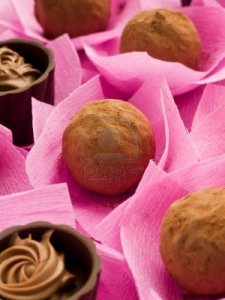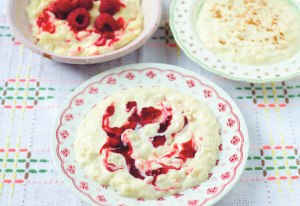In cool weather, bread puddings provide an inner furnace. They’re cheap and quick to make and if you don’t finish them, they can be put in the fridge and eaten later. The first recipe (or receipt) comes from The Diary of a Farmer’s Wife by Anne Hughes, dated 25 August 1796. Anne Hughes decided to start a diary to “set down all that I do every day” and so, for 13 months she wrote about her daily life, of the butter maken that sometimes “was longe time cummin” of collecting honey, pudden making, making merrie and all the social activities and hard work that was the lot of a farmer’s wife. This extraordinary document was rediscovered in the 1930s on a farm in Oxfordshire. The spelling is wonderful but not difficult to understand.
BREAD AND BUTTER PUDDING WITH PEARS
You doe peel some pares, then putt sum peeces of breade and butter in thee bottom of a deep dyshe, ande laye thee pares on toppe, then more bredde and butter, throwing on sum sugger ande a pinsh of cynamon. Then you doe take 4 eggs and beate them harde for a bitt then putt them in a messure of mylke ande beate uppe till frothie, then poore over thee puddinge in thee dyshe and cooke itt gentlie for an hower bye thee clocke.
Try greasing the dish before you add the mixture. You could put it in the microwave for 20 minutes on low heat but wouldn’t get the crispy top. Apples would substitute for pears.
The second dish is unrecognizable as a bread pudding. It’s rich, spicy, delicious and Mexican. It’s also a very old recipe. The ingredients are local and the same as those used in the 1640s to make bread and cakes. The recipe was recorded by the Holy Office of the Inquisition and saved in the archives.
Generally eaten at Lent, the ingredients symbolise the Passion of Christ. Many Mexican families see the dish as a reminder of the suffering of Christ on Good Friday. The bread is for the Body of Christ, the syrup is his blood, the raisins are the nails of the cross, and the whole cinnamon sticks are the wood of the cross. The melted cheese stands for the Holy Shroud.
CAPIROTADA: MEXICAN BREAD PUDDING
1 cup rich brown sugar
½ teaspoon cinnamon (or sticks)
1 cup water
2 ½ cups French bread cubes (stale is fine)
1 cup raisins or currants
¾ cup chopped walnuts
½ cup diced sharp cheddar
In a large pan combine brown sugar, cinnamon and water. Boil gently until the sugar is dissolved. Add the bread cubes and toss gently. Add raisins or currants, walnuts and cheese, and toss. Turn the mixture into a large greased casserole or baking pan. Bake at 375ºF for 15 minutes. Serve warm with whipped cream or vanilla ice cream.
Each cook has a different recipe for Capirotada, so experiment with fennel or cloves, apples or lemon juice, toasted almonds, and goat’s cheese.













